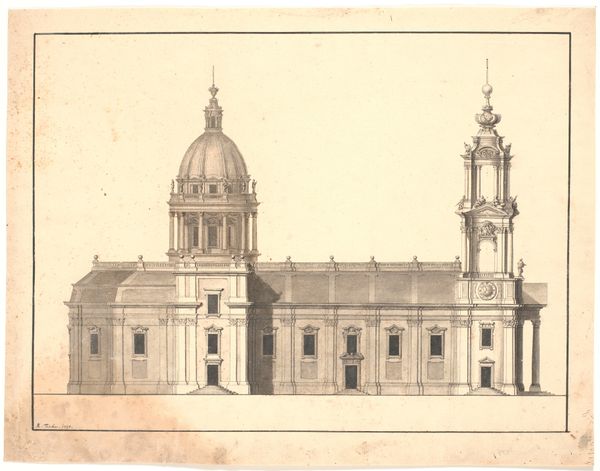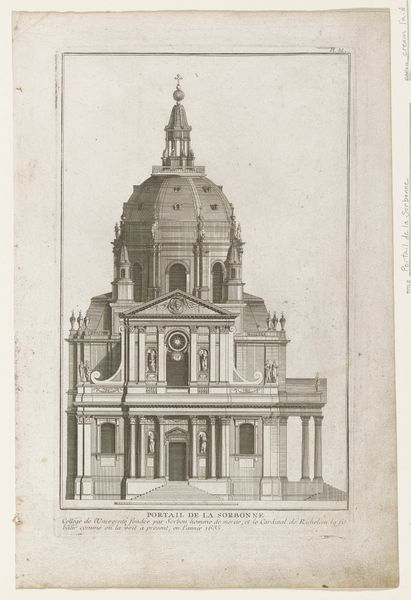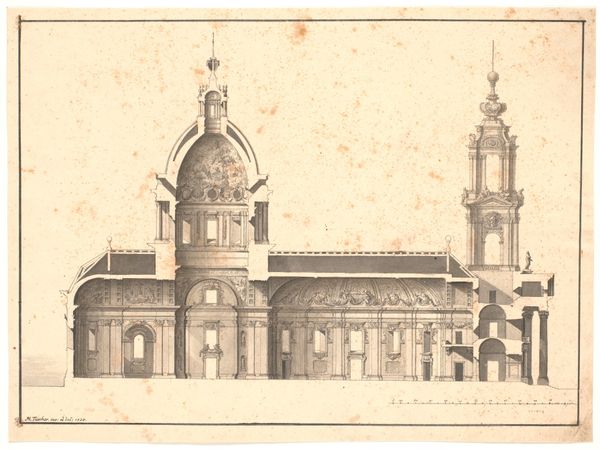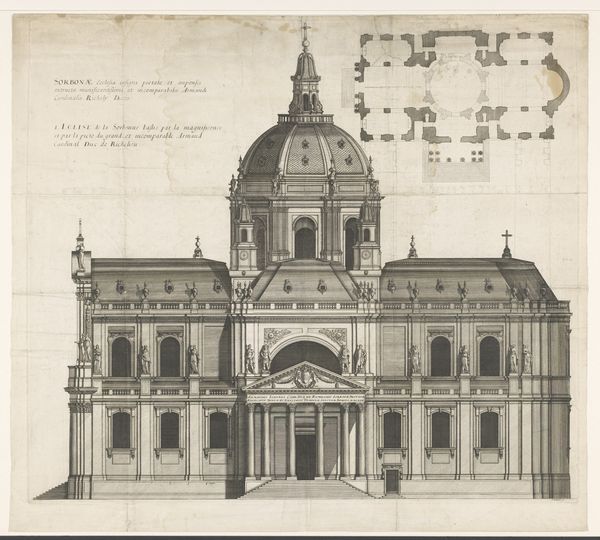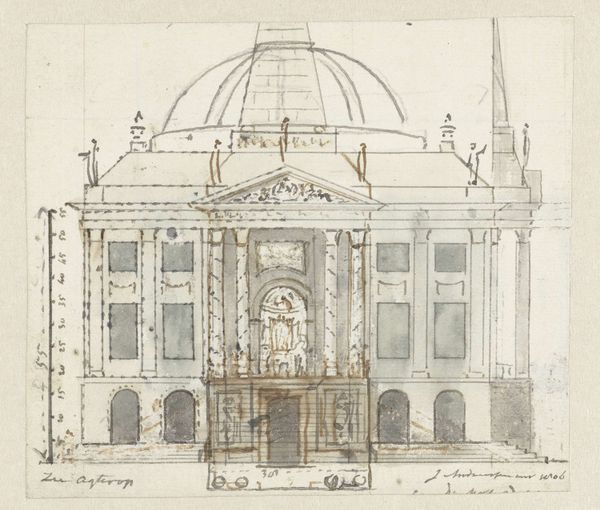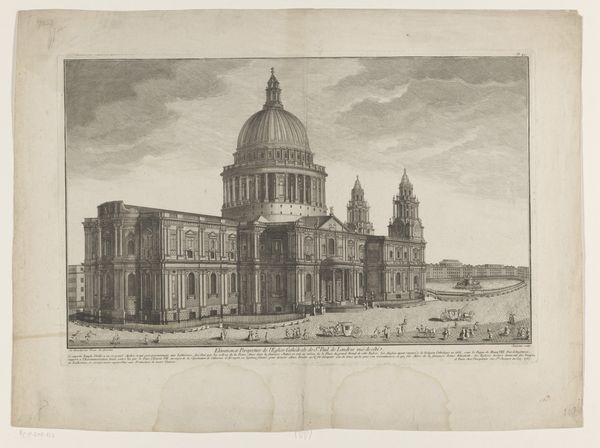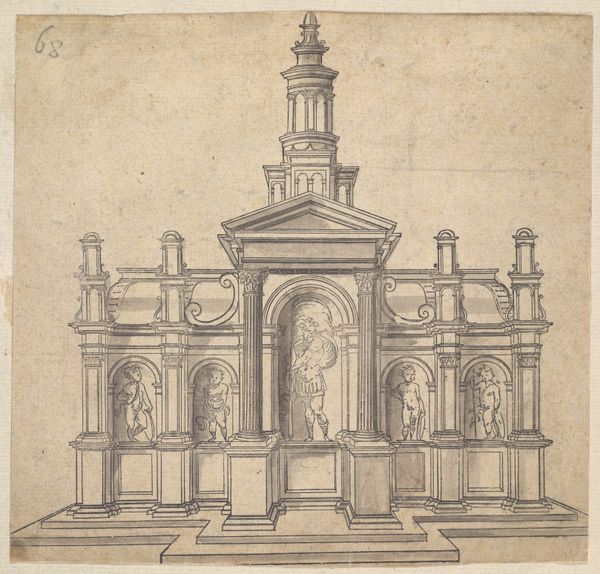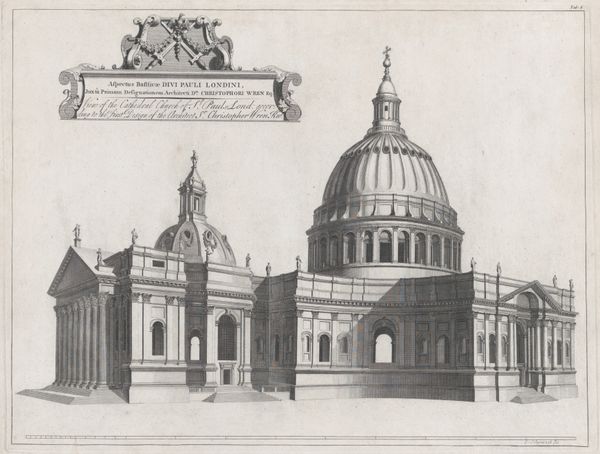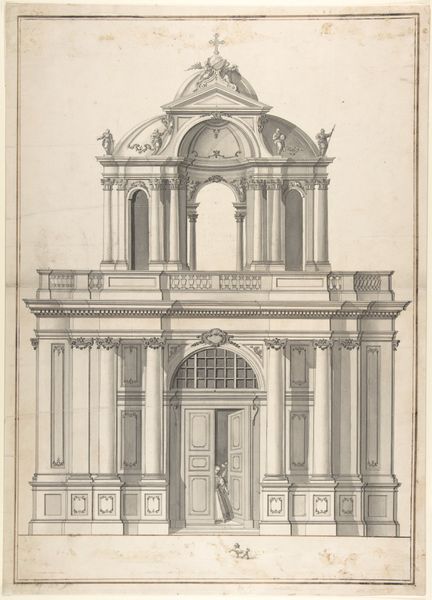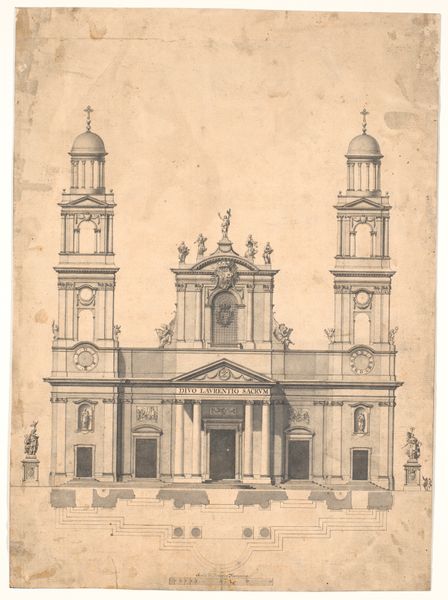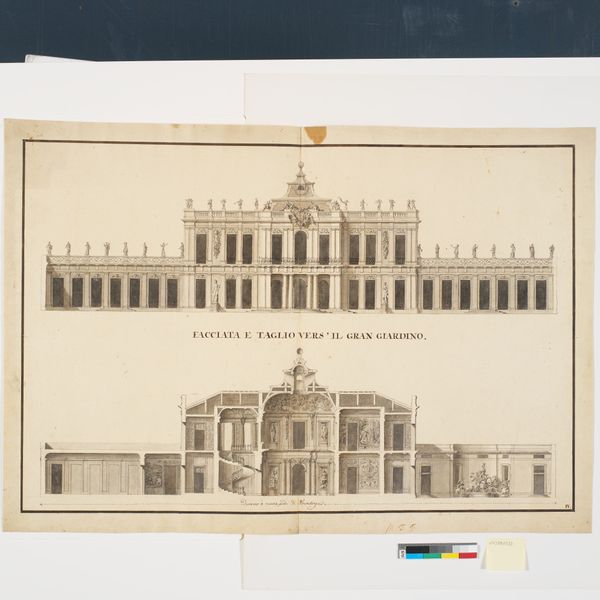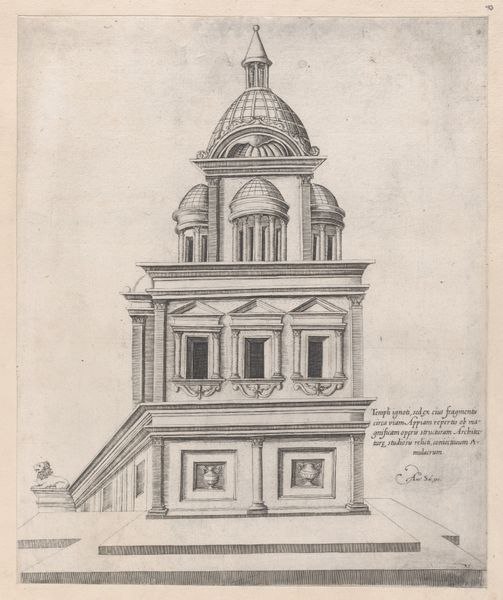
drawing, architecture
#
drawing
#
baroque
#
geometric
#
architecture
Dimensions: 349 mm (height) x 457 mm (width) (bladmaal), 319 mm (height) x 429 mm (width) (billedmaal)
Curator: Let's turn our attention to this architectural drawing by Marcus Tuscher. Dating from 1730, it is a draft for the facade of the church of San Lorenzo in Rome. The image rendered in ink shows a highly detailed geometric elevation of the proposed structure. Editor: The drawing certainly radiates a powerful sense of hierarchy and aspiration. I am immediately struck by the dome and its vertical thrust. Even in monochrome, one can discern the layers of symbolism at play here. Curator: Indeed. Tuscher was working in a late Baroque idiom. We can see how architectural designs during this period often were leveraged to communicate and reinforce institutional authority. Note the meticulously rendered columns, pilasters, and statues. Editor: Absolutely. And within the context of the Catholic Church, Baroque architecture frequently served to overawe, solidifying its central position through spectacular displays of power. The facade acts as a carefully crafted spectacle intended to inspire a certain kind of reverence, doesn’t it? I'd argue it continues a trend from antiquity to wield visual expression as a tool to establish both sacred space and civic command. Curator: The church sits squarely on its ground and this representation with its frontal perspective mirrors its own physical and ideological placement within Rome, I think. We have to consider this period and remember its socio-political landscape— where sacred authority was visibly expressed in public space. Editor: How does the visual language deployed in renderings such as this translate into real experiences and lives? In what ways does it shape the worshippers' perceptions and their relationship to religious and political constructs? I guess that is my question about it all. Curator: And a valuable question it is. I think analysing visual expression means digging below surface appearance to unpack its power. Editor: Exactly! Reflecting on this drawing provides insight into not only architectural aspirations of the Baroque period, but broader historical questions relating to identity, religion and power. Curator: I concur. Analyzing the historical narratives woven into drawings such as this help us look into power dynamics within society at that time and beyond.
Comments
No comments
Be the first to comment and join the conversation on the ultimate creative platform.
